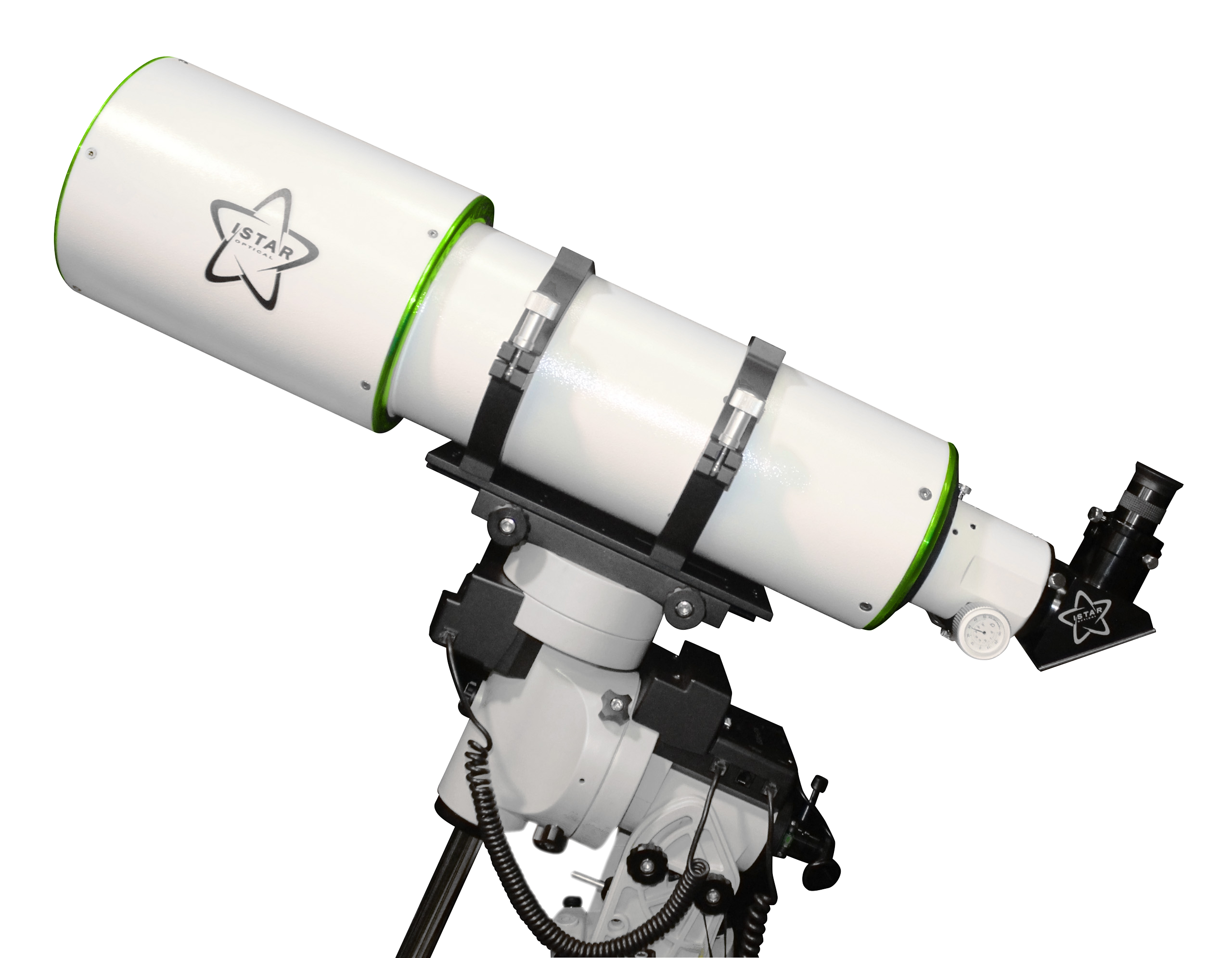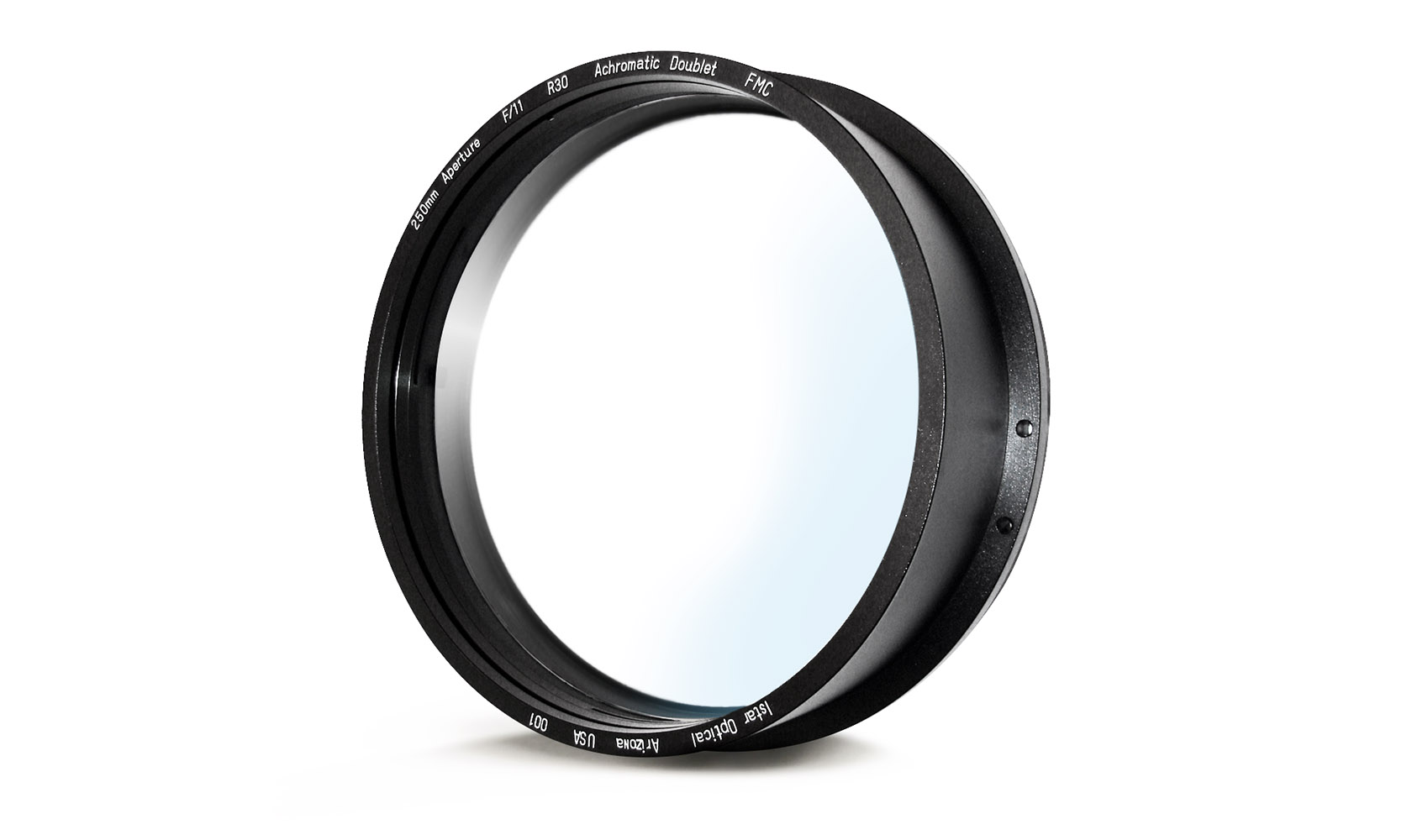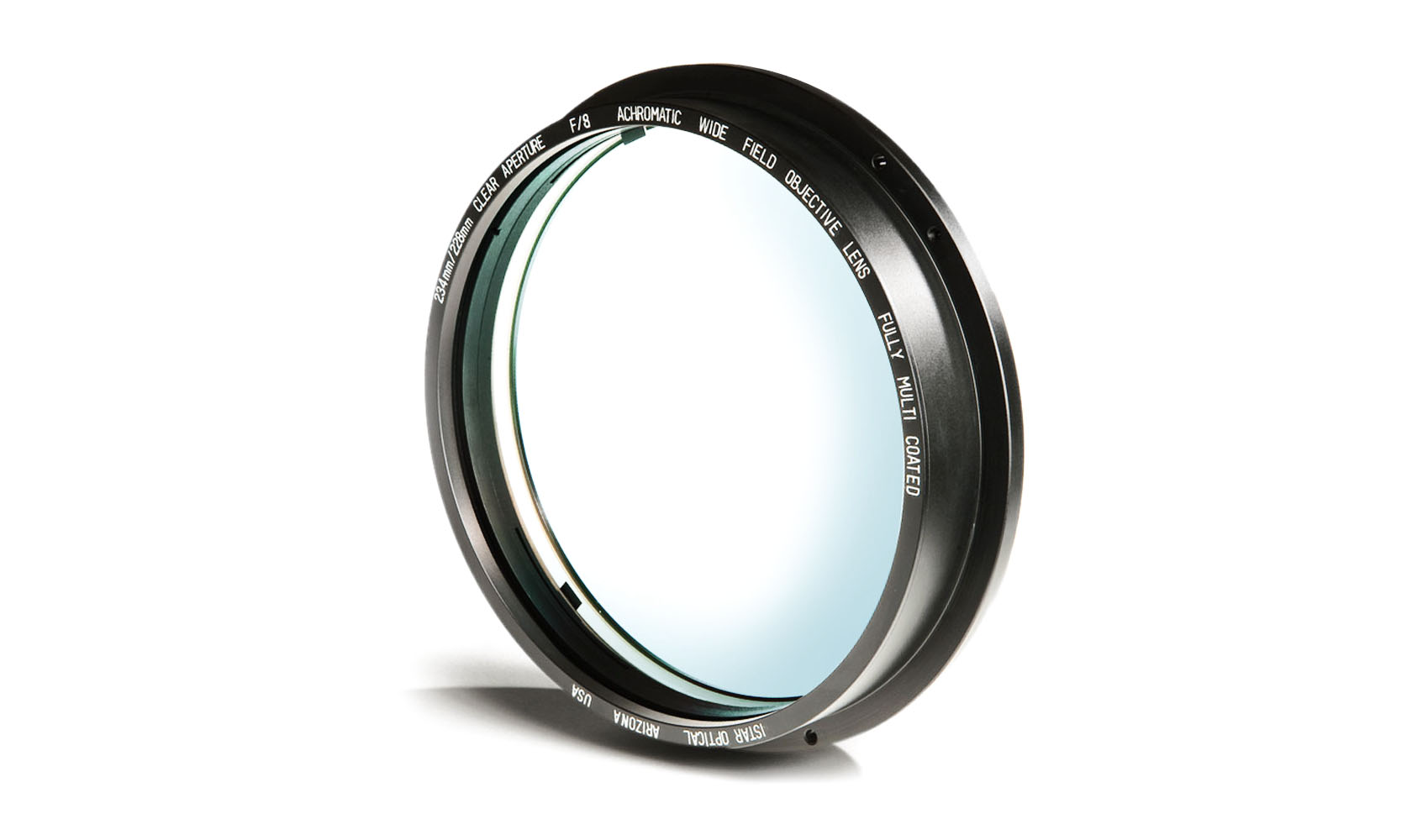









iStar Optical
More than a Telescope Manufacturer
iStar Optical is known for the design and manufacturing of quality telescopes and lenses for individuals and the astronomy industry. No less than a half dozen professional telescope builders and manufacturers in Europe and the US now implement our lenses in their telescopes. We have produced a number of objective lenses for Universities and observatories around the world including Mount Stromlo observatory in Canberra Australia, INAF-Osservatorio Astronomico di Brera in Italy, Swarthmore College in the USA, Hohenkarpfen Observatory in Germany, Pic du Midi observatory in France and Université Libre de Bruxelles in Belgium.
What you may not know is iStar Optical also designs and produces lenses for “Opto Mechanical” and “Opto Electronics” applications. Lenses and optical assemblies were recently produced for the physics departments of MIT in Massachusetts USA, L3Harris Technologies, and Caltech in Pasadena California USA. Specially designed lenses for Holographic applications were delivered to L-3 Communications EOTech in Ann Harbor Michigan USA. Recently iStar Optical became a registered supplier of optics for the prestigious STAR Labs of Lockheed Martin Aerospace and Defense Company.
Call or email today to find out how iStar Optical can provide solutions to your optical needs.
iStar’s 140mm F/6.5 Super APO Triplet
HIGHEST CONSISTENCY
IN TOP OPTICAL & MECHANICAL QUALITY!
more
HOMEMADE / DIY TELESCOPES
Using iStar objective lenses
PHANTOM FCL 140-6.5 REVIEW
by Josef Ladra, September 24, 2021
iStar Optical has been successfully manufacturing 127-250mm F5-F15 achromatic lenses for many years. These lenses are also purchased by various professional manufacturers of achromatic telescopes, as well as by amateurs who build refractors for themselves.
Technologically advanced achromats with the designations R30-T, R35-S, and R50-S (Anastigmatic, T-thick, S-slim) are also very well known because the optical design reduces chromatic aberration by 30-50% when compared to Fraunhofer’s conventional achromat designs. This is due to an improved false color correction due to incorporation of a dense flint (type of an ED glass) in the design.

ASTRO IMAGES
IC434 (Horsehead Nebula)
by Robin Lim
M101 (Pinwheel Galaxy) - before moon rise
by Dan Kahraman
Sun
by Robin Lim
Saturn
by Jose Restrepo and Dan Radulescu
See stunning photos taken with iStar Optical instruments
MATCHING YOUR TELESCOPE TO YOUR ASTRO CAMERA AND FEW WORDS ABOUT SAMPLING
(by Scott Tucker of Starizona)
Lets begin with the question received recently by a customer
(Click to see the full article)
Q:
Hello,
I don't want to distract you from your work but I have two questions that have arisen on the Mallincamsky Group site as a result of the ATT article on APOs giving the best results for imaging
People are simply dismissing it.(see the section in red beow)....IMO a triplet APO likely has fewer aberrations and concentrates more of its energy into the Airy disc even more so if it is very well made (Strehl values approaching 1.00)
The second question arose from the size of the pixels in the camera. Mallincamsky has a camera that uses the SONY IMX432LLJ and IMX432 LQJ sensors (mono or colour)
The pixels are 9.0 micron in size in diagonal 17.6mm in length for a total of 1.7M pixels. Would the Phantom 140 FCL 140-6.5 be ideally suited for this camera?
I will try to rebut or respond to the board based on my good understanding of your reply.
The area of contention seems to be oversampling or undersampling of the objects involved and that this determines the suitability of the telescope (I think they must mean focal length) and camera combination.
How are all these variables combined and reconciled with the article?
Dan
A:
People tend to make a bigger deal of sampling than really matters. Proper sampling *only* matters if you are trying to get the most high resolution detail out of an object. I (and many other people) have taken gorgeous astrophotos with, say, a 135mm camera lens which is massively undersampled. And it doesn't matter, the pictures can be amazing. But if you are trying to resolve tiny detail in a small galaxy, clearly a 135mm lens is not the system to use.
If you *are* trying to get the most detail, you would ideally match your pixel size to your seeing conditions. If you had 2 arcsecond seeing, for example, you would ideally want pixels that are 3 times smaller than that or about 0.7 arcsec/pixel. With a typical modern CMOS with 3.76-micron pixels, that would require a focal length of 1100mm. So a typical midsized apo could be a good choice for that.
9-micron pixels are huge by today's standards. So to get ideal sampling, you need a very long focal length of 2650mm, and now something like a 12" RC or CDK becomes better suited. But if you just want pretty pictures, those big pixels on a 140mm f/6.5 give 2 arcsec/pixel which would have great sensitivity. I assume that is the idea with the Mallincam: lower resolution but high sensitivity, better for EAA and such.
Here is one of my images at a resolution of 2.6 arcsec/pixel, and here is one at 5.7 arcsec/pixel.
Doesn't affect how good a picture you can get, just how much resolution you have. And resolution is rarely the primary objective.
—
Regards,
Scott Tucker
CLOSE
x
Newly Designed & Precision Manufactured
Line of Super APO Triplet OTA Refractors

RUNNING OUT OF BACK FOCUS?
iStar’s newly designed and produced Phantom FCL 140-6.5
is the first-ever imaging Super APO refractor with fully
detachable 80mm rear section to allow for the use
of binoviewers, and imaging equipment requiring
extended back focus distance.
Based on recent reviews and customer feedback I wanted to inform everyone that we have resolved the issue with the slipping rotary lock grip in some units. From now on every single unit will be equipped with a special soft metal strips assuring strong solid grip even on the largest eyepieces and heavy imaging systems.
Thank you everyone for your support!
Ales Patrick Krivanek
iStar Phantom FCL 140-6.5 Super APO Triplet
For Full Frame (FF) imaging use William Optics Flattener 68III.
To attach WO Flattener 68III to Phantom FCL 140-6.5 requires a custom made adapter. For all of your adapter needs please contact Starizona.
for APS-C imaging use Starizona Apex ED L 0.65x Reducer/Flattener
ATM built - iStar Optical 140mm f6.5 Super APO Triplet
Robin Lim
Hi all,
Just want to share with you all my experience on building my own APO Triplet refractor. I always wanted to build my own refractor, I did it recently by purchasing a skywatcher esprit 80ED lens and build the tube around it, but then I wanted a bigger scope with longer focal length.
My aim is to build myself a refractor with APO Triplet lens. It is hard to get the manufacturer that sell the lens cells alone so when iStar Optical released their first batch of 140mm APO Triplet lens, I did not put any hesitation and take a bold jump to be the first adapter of this lens.
It took me 2 months to get the lens from ordering to delivery and meanwhile, I communicated with iStar optical to get the detailed lens drawing as well as the focal length data I need to determine the tube size.


New iStar 140 F/6.5 Super APO triplet
Build by Robin Lim, Singapore

Photo of M42 (Orion Nebula) taken by Robin Lim using
Lens: iStar 140mm f6.5 Triplet Super APO
Camera: QHY600M
Field Flattener: William Optics Flat68III 1.0x
Mount: Skywatcher HEQ5 - Belt Modded
Guide Scope: William Optics Uniguide 50mm
Guide Cam: QHY5III290C
Capture Software: Astro Photography Tools
Guiding Software: PHD2
Focuser: Pegasus Astro FocusCube2
USB Hub: Pegasus Astro USB Control Hub
Flat panel: Pegasus Astro FlatMaster 150
Filter Wheel: ZWO 2" EFW
Filters: Chroma 3nm narrowband filters, 50mm unmounted
Image Stacking: AstroPixelProcessor
Post Processing: Adobe Photoshop, HLVG, Topaz DeNoise
iStar 140 F/6.5 APO triplet
Frames taken
Ha: 8 x 600s
Sii: 6 x 600s
Oiii: 6 x 600s
Total integration time: 3 hours 20 minutes
Calibrated with
10 x Dark Frames
100 x Bias Frames
10 x Flat Frames for each filter
Taken from Singapore, Bortle 9 sky, 07 February 2021
"The universe is full of magical things
patiently waiting for our wits to grow sharper."
Eden Phillpotts
REVIEWS
ACCESSORIES
OBJECTIV
LENSES
REFRACTORS
HOME
Each international customer is responsible for paying local taxes and fees! We ship from Tucson, Arizona, USA so only US customers (excluding Arizona residents) will receive their items tax free. Contact your local customs authorities before ordering.












